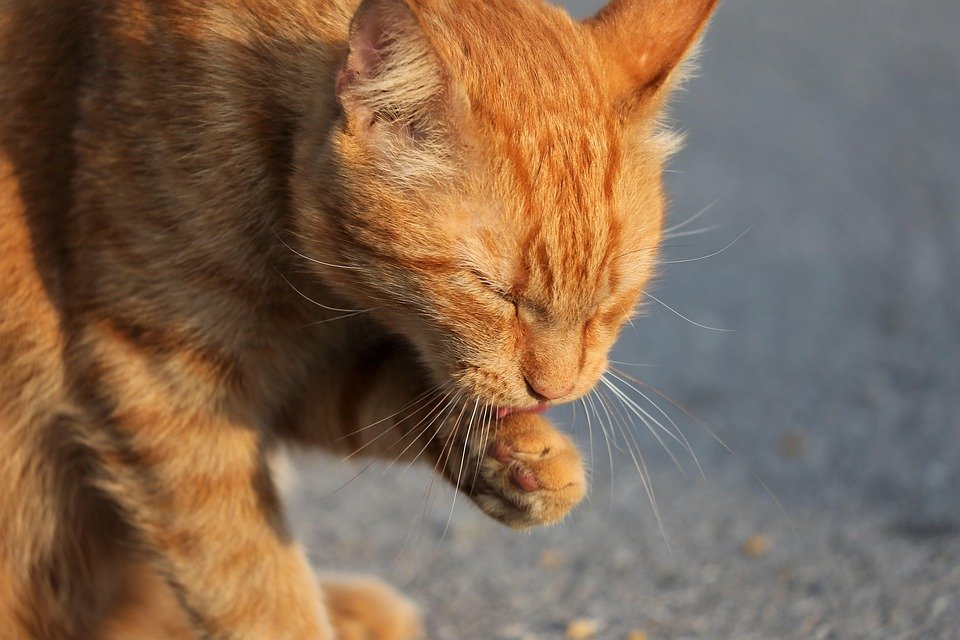
Introduction
Grooming is an essential part of maintaining a cat’s hygiene and health. However, it can be a stressful experience for both the cat and the owner if not handled properly. This article provides expert tips to help calm your cat during grooming sessions, ensuring a smoother and more enjoyable experience for both parties involved.
Understanding Your Cat’s Behavior
Before diving into grooming techniques, it’s crucial to understand your cat’s behavior. Cats are naturally independent creatures, and their reactions to grooming can vary greatly. Some may enjoy the attention, while others may feel threatened or uncomfortable. Recognizing your cat’s body language and signals can help you anticipate their responses and adapt your approach accordingly.
Creating a Calming Environment
The environment plays a significant role in how your cat perceives grooming sessions. Here are some tips to create a calm and inviting atmosphere:
Choose a Quiet Space
Select a quiet and comfortable area in your home for grooming. Avoid high-traffic areas and loud noises, as these can increase your cat’s anxiety. A serene environment helps your cat feel more at ease and receptive to the grooming process.
Use Soft Lighting
Soft lighting can have a soothing effect on your cat. Avoid using bright, harsh lights that may startle or stress them. Instead, opt for gentle lighting that creates a calming ambiance.
Play Calming Music
Playing soft, calming music in the background can help relax your cat during grooming. Music with gentle melodies or nature sounds can create a tranquil atmosphere that eases tension.
Building Trust and Comfort
Establishing trust and comfort with your cat is foundational for successful grooming. Here are some strategies to build a strong bond with your feline friend:
Regular Handling
Get your cat accustomed to being handled regularly. Gently pet and stroke them daily, focusing on areas that will be groomed. This helps desensitize them to touch and prepares them for grooming sessions.
Use Positive Reinforcement
Reward your cat with treats and praise during and after grooming. Positive reinforcement helps associate grooming with positive experiences, making your cat more willing to participate in future sessions.
Stay Calm and Patient
Cats are highly perceptive to human emotions. Stay calm and patient during grooming, as your cat will pick up on your cues. Avoid expressing frustration or impatience, as this can increase their stress levels.
Utilizing Proper Grooming Techniques
Using the right grooming techniques can significantly impact your cat’s comfort level. Here are some expert tips for effective grooming:
Start Slowly
Begin with short grooming sessions and gradually increase the duration as your cat becomes more comfortable. This incremental approach prevents overwhelming your cat and allows them to adjust at their own pace.
Use the Right Tools
Invest in high-quality grooming tools suitable for your cat’s coat type. Brushes, combs, and nail clippers should be gentle and comfortable for your cat. The right tools can make a significant difference in their grooming experience.
Be Gentle and Methodical
Handle your cat gently and methodically during grooming. Use slow, deliberate movements to avoid startling them. Pay attention to areas that may be sensitive, such as the belly and tail, and approach these with extra care.
Addressing Specific Grooming Challenges
Some cats may have specific grooming challenges that require tailored approaches. Here are common issues and how to address them:
Tackling Matting and Tangles
For cats with long or dense coats, matting and tangles can be a common issue. Use a detangling spray and a wide-toothed comb to gently work through the knots. Take your time and be patient to avoid causing discomfort.
Dealing with Shedding
Regular brushing helps manage shedding and reduces the amount of loose fur in your home. Use a deshedding tool designed for your cat’s coat type to effectively remove loose hair and prevent excessive shedding.
Managing Nail Trimming
Nail trimming can be one of the most challenging aspects of grooming for many cat owners. Introduce nail clipping gradually, rewarding your cat with treats and praise after each successful attempt. If your cat is particularly resistant, consider seeking professional assistance from a groomer or veterinarian.
Seeking Professional Help
If grooming remains a stressful ordeal despite your best efforts, it may be beneficial to seek professional help. Professional groomers have the experience and expertise to handle even the most anxious cats, ensuring their safety and comfort during grooming sessions.
Conclusion
Grooming should be a positive experience for both you and your cat. By understanding your cat’s behavior, creating a calming environment, building trust, utilizing proper techniques, and addressing specific challenges, you can make grooming a more enjoyable and stress-free process. Remember, patience and consistency are key, and if needed, don’t hesitate to seek professional help to ensure your cat’s well-being.







